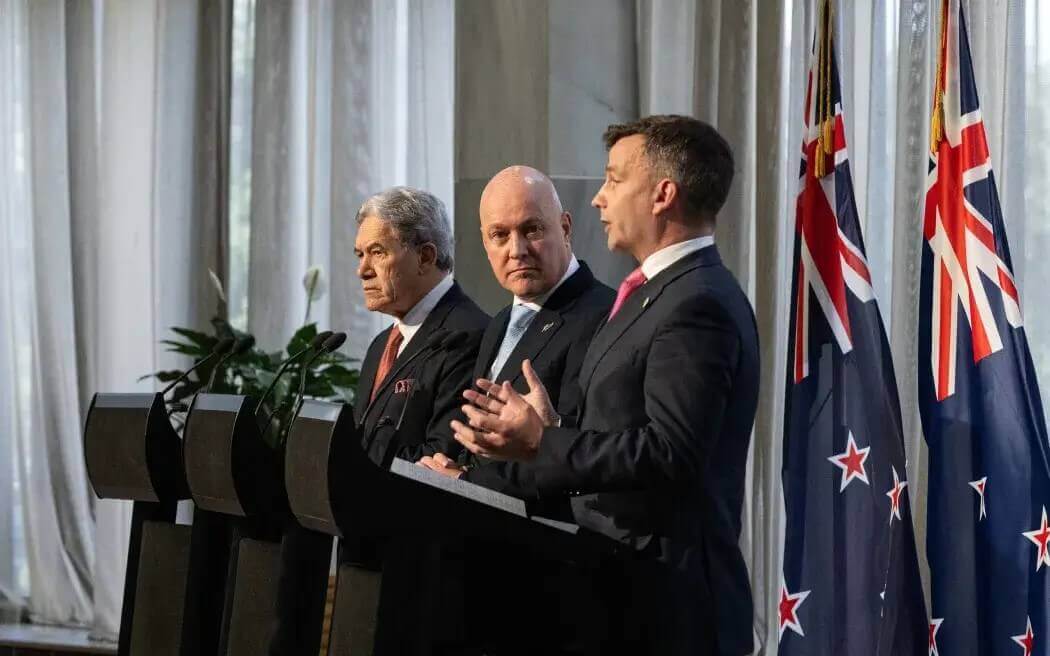“He repeatedly puts words into the mouths of others — to make it seem like his views are universal,” writes Dr. Brian Tweed in this sharp critique of David Seymour’s rhetorical manoeuvres. Drawing from a close reading of Seymour’s Q + A interview on the Principles of the Treaty of Waitangi Bill, Tweed dissects the verbal tactics used to reshape reality and marginalise dissent.

What is Political Ventriloquism?
According to Dr. Tweed, political ventriloquism is the act of attributing one’s views to shadowy collectives or imagined consensus — as if “everyone” agrees, thereby sidelining actual opposition. Seymour does this repeatedly: whether citing unnamed developers, generic iwi leaders, schools, or a speculative future public, he crafts a false sense of universality around his ideology.
Examples from the Interview
- Invented Collectives: Seymour uses terms like “we” or “people say” without ever specifying who he means.
- Gaslighting with Identity: He presents tangata whenua and tangata Tiriti distinctions as oppressive roles rather than historical recognitions.
- Schools as Cultural Threats: Seymour paints compulsory te reo Māori as if it’s replacing maths and science — with no evidence.
- Invisible Developers: He claims cultural impact assessments are halting housing projects based on anonymous sources.
- The Spectral Waitangi Tribunal: He twists a statement from the Tribunal into an accusation of racial collectivism.
Why It Matters
Tweed warns that this isn’t harmless rhetoric — it’s part of a broader campaign to erode Māori rights, redefine the Treaty, and align Aotearoa with imported ideologies that valorise individualism and suppress collective obligations.
“Seymour creates ‘dummies’ who say what he wants them to say… almost one every two minutes. It’s not just flair — it’s gaslighting, designed to make people question what they know to be true.”
Conclusion
Seymour’s rhetorical sleight of hand isn’t just about style — it’s strategy. By distorting dialogue, he shifts the political Overton window, making radical erasures sound like reasoned reforms. As Tweed reminds us: next time a politician claims “everyone agrees,” ask who “everyone” is — and whose voice is being ventriloquised.
Every case documented strengthens public memory—and demands accountability.
🔙 Back to APIAPE Index